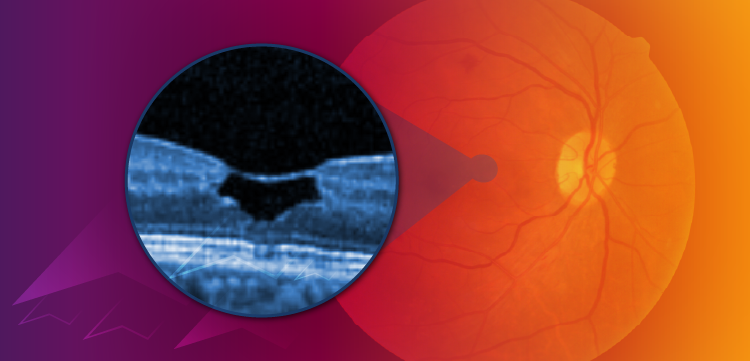- Ophthalmology Times: July 2024
- Volume 49
- Issue 7
A guide to treating severe ocular graft-vs-host disease
The key to successful management of oGVHD is early diagnosis
Graft-vs-host disease (GVHD) is a devastating complication that typically follows allogeneic hematopoietic stem cell and bone marrow transplantation, transplantation of solid organs with high concentrations of lymphoid cells, or transfusion of unirradiated blood. GVHD is associated with symptoms that often severely affect quality of life. Between 6% and 80% of patients who undergo hematopoietic stem cell transplantation procedures experience some form of chronic GVHD, usually on the skin or in the mouth, gastrointestinal tract, and liver, and more than 10% of these patients will die from GVHD.1
Ocular involvement in GVHD is often a sign of poor prognosis.1 Ocular manifestations—experienced by 40% to 60% of patients who undergo allogeneic transplantation and 60% to 90% of patients with acute or chronic GVHD—usually follow the involvement of other organs, such as the mouth and skin, and can affect the cornea, conjunctiva, and lacrimal and meibomian glands.2,3 The high prevalence of ocular GVHD (oGVHD) underscores the importance of recognizing and addressing this condition in clinical practice.
Navigating the clinical spectrum of disease
Patients with oGVHD most frequently present with symptoms mirroring those of dry eye disease (DED), and common symptoms of oGVHD include dryness, foreign body sensation, ocular fatigue, discharge, and dull sensations. However, oGVHD can have heterogeneous presentations, and some patients may present with periocular complications such as eyelid dermatitis, lagophthalmos and ectropion, poliosis, madarosis, periorbital hyperpigmentation, and vitiligo.3,4
Other manifestations of oGVHD may include cicatricial conjunctivitis, confluent areas of punctate keratopathy, photophobia, blepharitis, and difficulty opening one’s eyes in the morning due to mucoid secretion. According to the National Institutes of Health (NIH), chronic oGVHD can be diagnosed with a new onset of DED symptoms with corresponding low Schirmer test scores if accompanied by distinctive manifestations in at least 1 other organ.4 Pseudomembranes may form in acute oGVHD.5
As the disease progresses, chronic ocular surface inflammation can result in neovascularization, conjunctivalization, and limbal stem cell deficiency. The DED findings experienced by patients with oGVHD may progress to corneal stromal thinning, melt, and perforation, and ulceration may rapidly progress to perforation that is refractory to standard medical or surgical treatments. If cicatricial conjunctivitis is present, it may progress to conjunctival keratinization and punctal occlusion.6
Referral patterns and grading criteria
Most patients who present to my practice with oGVHD are referred from clinicians at the early stage of disease, when clinical signs and symptoms resemble those seen in patients with DED. Sjögren syndrome, a severe ocular surface inflammatory condition, may present with many of the same DED signs and symptoms that feature in oGVHD.3 DED associated with Sjögren syndrome, however, does not often feature excessive ocular surface fibrosis. The presence of symblepharon and forniceal shortening is a characteristic feature of oGVHD.7 It is crucial to treat patients at the earliest sign of disease to avoid progression.
Several grading criteria have been developed to stage the severity of oGVHD. In 2014, the NIH released an updated organ-specific severity scoring system for chronic GVHD (Table).8
Additionally, the International Chronic oGVHD Consensus Group proposed a diagnostic system and severity scale for chronic oGVHD based on the severity of several ocular parameters, including Ocular Surface Disease Index, Schirmer test score without anesthesia, corneal fluorescein staining, and conjunctival injection. In this system, the diagnosis of oGVHD is determined from the aggregate score of these parameters and the presence or absence of systemic cGVHD.9
In my practice, I generally consider oGVHD to be severe if signs and symptoms cannot be controlled with topical lubricants and local anti-inflammatory treatments. Recognizing the transition from early-stage to severe or complex disease requires a nuanced understanding of the signs and symptoms that elude conventional therapies.
Treatment paradigms
Medical therapy remains the cornerstone of oGVHD management, and topical lubrication is the first-line treatment. Surgical interventions such as temporary or permanent punctal occlusion may be introduced early in the management course to improve ocular surface health, and the number of puncta to be occluded should be based on patients’ Schirmer test scores and disease severity. The use of topical steroids has also been investigated in both acute and chronic oGVHD, but results from these trials have been mixed.
When ocular signs and symptoms are refractory to medical therapy, other surgical approaches may be considered, including tarsorrhaphy (to reduce ocular surface exposure and minimize dryness) and superficial epithelial debridement (to remove filaments for pain relief in patients with filamentary keratitis). Mucous membrane and skin grafts may be introduced in the presence of severe presentations involving cicatricial lid disease.
Additional surgical procedures that may be considered but are usually reserved as a last resort in patients with impending or actual perforation include tectonic patch grafts and penetrating keratoplasty.6 Severe cases may also benefit from allogeneic limbal stem cell transplantation, and these allografts can be obtained from the same hematopoietic stem cell donor. There is some evidence that autologous limbal stem cell transplantation may be more successful than allogeneic limbal stem cell transplantation.10
However, because there is usually bilateral involvement in oGVHD, it is usually not possible to receive an autologous stem cell transplant from the other eye. Poor graft survival in patients who received penetrating keratoplasty and have at least 1 postoperative risk factor, such as injection, rejection, or disease recurrence, is well documented.11 Therefore, eye care providers should counsel patients on the risk of graft failure and melt due to ongoing ocular surface inflammation.
Keratoprosthesis is an alternative for advanced cases. However, long-term outcomes remain suboptimal for patients with oGVHD due to the risk of progressive corneal melt, especially in the presence of ongoing inflammation and severe dryness.12 Better long-term outcomes have been reported with the osteo-odonto keratoprosthesis, but this procedure is complex and requires the involvement of an oral or maxillofacial surgeon.13
Protective therapies
Amniotic membrane grafts (AMGs) can facilitate healing and bridge the gap between medical management and surgical intervention in patients with moderate to severe oGVHD. AMGs have been found to improve conjunctival inflammation and fibrotic changes in patients with severe chronic oGVHD.14 AMGs can be placed in the outpatient setting. In patients with significant thinning, I prefer to fixate multiple layers to fill the defect, decrease inflammation, foster epithelialization, and reduce the chances of perforation. In my practice, we often use a self-retained and sutureless cryopreserved AMG (Prokera; BioTissue Inc) for patients with persistent epithelial defects and for the management of symblepharon formation to promote epithelialization and reduce inflammation and vascularization.
Outlook
I am currently collaborating with a company to attempt to design a clear keratoprosthesis with higher biomechanical stability than human corneas that resists degradation and melt from ocular surface inflammation. If successful, this kind of product may provide an alternative approach to visual rehabilitation in patients with severe corneal opacity due to oGVHD.
The key to successful management of oGVHD is early diagnosis. Recognizing subtle signs and symptoms allows clinicians to intervene before serious symptoms, irreversible damage to the ocular surface, and significant decline in quality of life occur.
Zeba A. Syed, MD
E: [email protected]
Syed is an associate professor of ophthalmology and director of the Cornea Fellowship Program at Wills Eye Hospital in Philadelphia, Pennsylvania. Syed lists BioTissue as a relevant disclosure.
References
Justiz Vaillant AA, Modi P, Mohammadi O. Graft-versus-host disease. In: StatPearls. StatPearls Publishing; 2022.
Trindade M, Rodrigues M, Pozzebon ME, et al. A plethora of ocular surface manifestations in a multidisciplinary ocular graft-versus-host disease unit. Sci Rep. 2022;12(1):15926. doi:10.1038/s41598-022-19990-z
Nassiri N, Eslani M, Panahi N, Mehravaran S, Ziaei A, Djalilian AR. Ocular graft versus host disease following allogeneic stem cell transplantation: a review of current knowledge and recommendations. J Ophthalmic Vis Res. 2013;8(4):351-358.
Filipovich AH, Weisdorf D, Pavletic S, et al. National Institutes of Health consensus development project on criteria for clinical trials in chronic graft-versus-host disease, I: diagnosis and staging working group report. Biol Blood Marrow Transplant. 2005;11(12):945-956. doi:10.1016/j.bbmt.2005.09.004
Hayashi S, Shimizu E, Uchino M, et al. The overlap syndrome: a case report of chronic graft-versus-host disease after the development of a pseudomembrane. Cornea. 2021;40(9):1188-1192. doi:10.1097/ICO.0000000000002593
Nair S, Vanathi M, Mukhija R, Tandon R, Jain S, Ogawa Y. Update on ocular graft-versus-host disease. Ind J Ophthalmol. 2021;69(5):1038-1050. doi:10.4103/ijo.IJO_2016_20
Ogawa Y. Sjögren’s syndrome, non-Sjögren’s syndrome, and graft-versus-host disease related dry eye. Invest Ophthalmol Vis Sci. 2018;59(14):DES71-DES79. doi:10.1167/iovs.17-23750
Jagasia MH, Greinix HT, Arora M, et al. National Institutes of Health consensus development project on criteria for clinical trials in chronic graft-versus-host disease, I: the 2014 diagnosis and staging working group report. Biol Blood Marrow Transplant. 2015;21(3):389-401.e1. doi:10.1016/j.bbmt.2014.12.001
Ogawa Y, Kim SK, Dana R, et al. International Chronic Ocular Graft-vs-Host-Disease (GVHD) Consensus Group: proposed diagnostic criteria for chronic GVHD (part I). Sci Rep. 2013;3:3419. doi:10.1038/srep03419
Le Q, Chauhan T, Yung M, Tseng CH, Deng SX. Outcomes of limbal stem cell transplant: a meta-analysis. JAMA Ophthalmol. 2020;138(6):660-670. doi:10.1001/jamaophthalmol.2020.1120
Patel SV. Graft survival after penetrating keratoplasty. Am J Ophthalmol. 2011;151(3):397-398. doi:10.1016/j.ajo.2010.10.006
Daoud R, Sabeti S, Harissi-Dagher M. Management of corneal melt in patients with Boston keratoprosthesis type 1: repair versus repeat. Ocul Surf. 2020;18(4):713-717. doi:10.1016/j.jtos.2020.07.005
Tan A, Tan DT, Tan XW, Mehta JS. Osteo-odonto keratoprosthesis: systematic review of surgical outcomes and complication rates. Ocul Surf. 2012;10(1):15-25. doi:10.1016/j.jtos.2012.01.003
Ikarashi H, Aketa N, Shimizu E, et al. Two case reports of continued progression of chronic ocular graft-versus-host disease without concurrent systemic comorbidities treated by amniotic membrane transplantation. BMC Ophthalmol. 2021;21(1):164. doi:10.1186/s12886-021-01925-3
Articles in this issue
Newsletter
Don’t miss out—get Ophthalmology Times updates on the latest clinical advancements and expert interviews, straight to your inbox.

















































.png)


